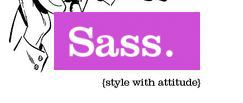Knockout.js
Knockout is a JavaScript library that helps you to create rich, responsive display and editor user interfaces with a clean underlying data model. Any time you have sections of UI that update dynamically (e.g., changing depending on the user’s actions or when an external data source changes), KO can help you implement it more simply and maintainably.
http://knockoutjs.com/

Angular.js
AngularJS is an open-source JavaScript framework, maintained by Google, that assists with running what are known as single-page applications. Its goal is to augment browser-based applications with model–view–controller (MVC) capability, in an effort to make both development and testing easier. The library reads in HTML that contains additional custom tag attributes; it then obeys the directives in those custom attributes, and binds input or output parts of the page to a model represented by standard JavaScript variables. The values of those JavaScript variables can be manually set, or retrieved from static or dynamic JSON resources.
http://angularjs.org/

Backbone.js
Backbone.js gives structure to web applications by providing models with key-value binding and custom events, collections with a rich API of enumerable functions, views with declarative event handling, and connects it all to your existing API over a RESTful JSON interface.
http://backbonejs.org

Node.js
Node.js is a platform built on Chrome’s JavaScript runtime for easily building fast, scalable network applications. Node.js uses an event-driven, non-blocking I/O model that makes it lightweight and efficient, perfect for data-intensive real-time applications that run across distributed devices.
http://nodejs.org/

Modernizr
Modernizr is a small JavaScript library that detects the availability of native implementations for next-generation web technologies, i.e., features that stem from the HTML5 and CSS3 specifications. Many of these features are already implemented in at least one major browser (most of them in two or more), and what Modernizr does is, very simply, tells you whether the current browser has this feature natively implemented or not.
http://modernizr.com

Require.js
RequireJS is a JavaScript file and module loader. It is optimized for in-browser use, but it can be used in other JavaScript environments, like Rhino and Node. Using a modular script loader like RequireJS will improve the speed and quality of your code.
http://requirejs.org

Less
LESS extends CSS with dynamic behavior such as variables, mixins, operations and functions. LESS runs on both the server-side (with Node.js and Rhino) or client-side (modern browsers only).
http://lesscss.org/

Sass
Sass is an extension of CSS3, adding nested rules, variables, mixins, selector inheritance, and more. It’s translated to well-formatted, standard CSS using the command line tool or a web-framework plugin.
http://sass-lang.com

